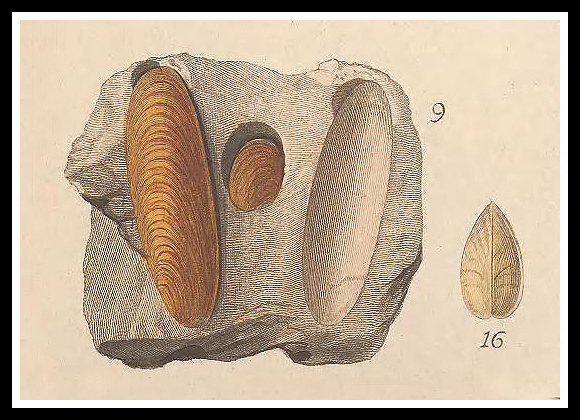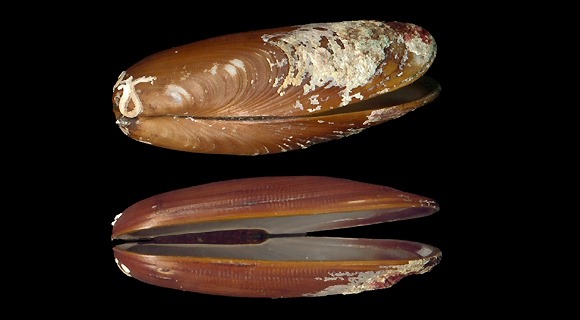
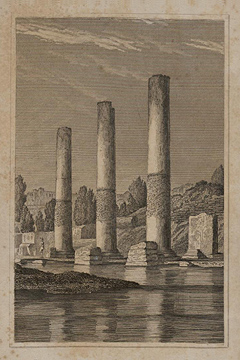 Lives in colonies, nested inside walls, cliffs and even in human built structures, whenever the rock is of limestone. A famous example was given by the geologist Charles Lyell, who observed, on the three standing columns of the “Temple of Serapis” in Pozzuoli (pictured at left, with link), a band of drilled marble between 3m and 6m hight. The cause was a colony of L. lithophaga located just below the sea-level, at a time when the temple was partially submerged. The base of the columns remained intact, hidden and protected by volcanic deposits, nowadays removed. « Above this is a zone, about nine feet in height, where the marble has been pierced by a species of marine perforating bivalve, Lithodomus. » – C. Lyell: Principles of geology vol. I, London 1837.
Lives in colonies, nested inside walls, cliffs and even in human built structures, whenever the rock is of limestone. A famous example was given by the geologist Charles Lyell, who observed, on the three standing columns of the “Temple of Serapis” in Pozzuoli (pictured at left, with link), a band of drilled marble between 3m and 6m hight. The cause was a colony of L. lithophaga located just below the sea-level, at a time when the temple was partially submerged. The base of the columns remained intact, hidden and protected by volcanic deposits, nowadays removed. « Above this is a zone, about nine feet in height, where the marble has been pierced by a species of marine perforating bivalve, Lithodomus. » – C. Lyell: Principles of geology vol. I, London 1837.Original taxon: Mytilus lithophagus. Synonyms: Lithodomus dactylus and inflatus, Lithophaga mytuloides.
2m deep, in limestone bank, Marathi beach, Souda bay, Chania, N. Crete. 37mm.
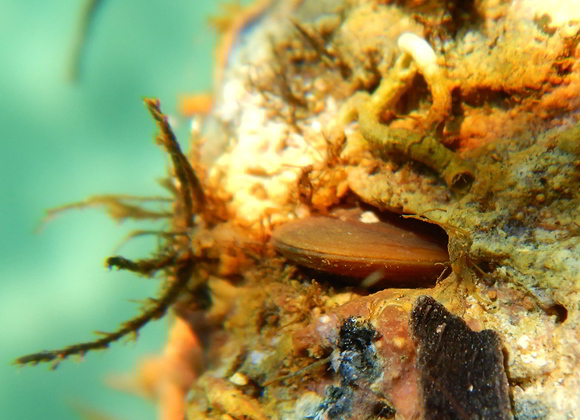
– (CC BY) –
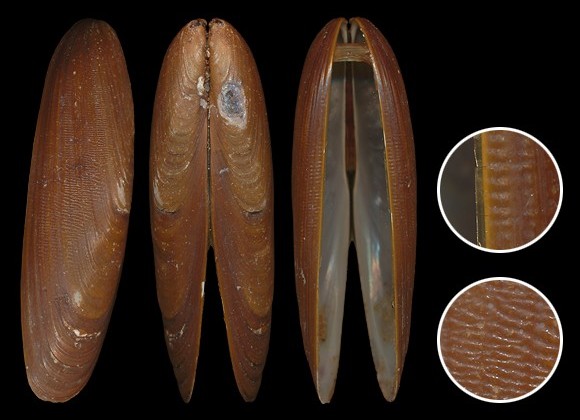
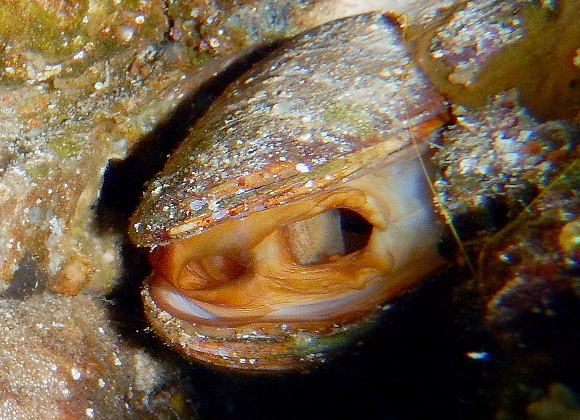
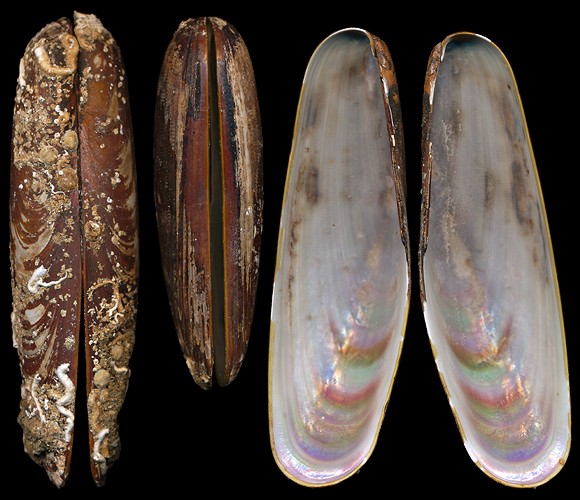

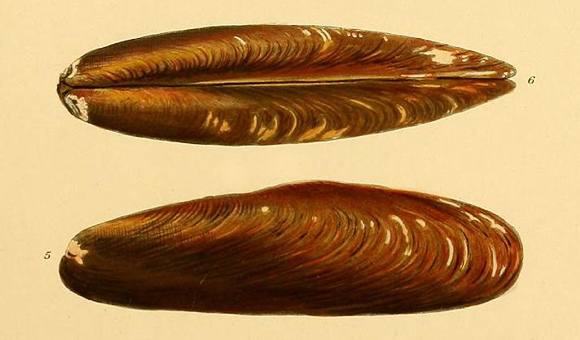
Lithophaga lithoglypha Meuschen. – Testa valde inflata, solida, subcylindrica, utrinque rotundata, postice latior, striis incrementi concentricis subtilibus partem posticam versus fortioribus instructa ; basis paene rectilinea ; dorsum medium paululum fornicatum et carinatum ; umbones ab extremitate antica remotiusculi ; epidermis castanea, parte antica et dorso exceptis striis directis insignita. – Mare mediterraneum. Multis locis corallia et rupes perforans invenitur. »
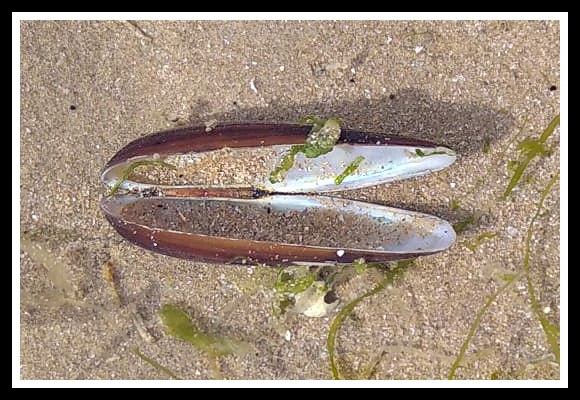
Original picture provided by B. J. Muñoz-Sánchez (ES).
– (CC BY-NC-SA) –
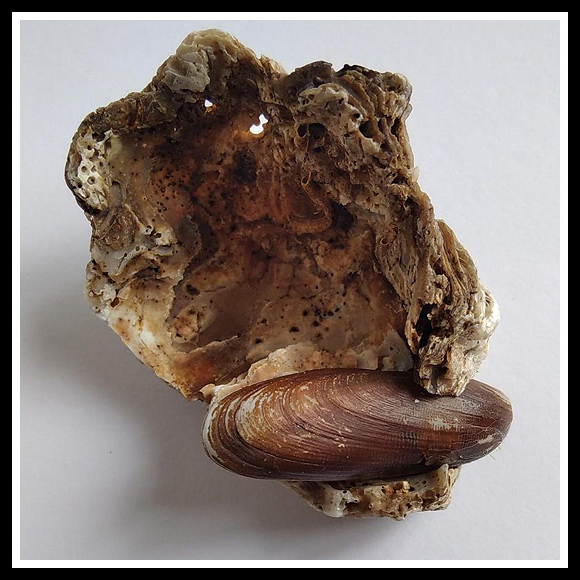
Original picture provided by B. J. Muñoz-Sánchez (ES).
– (CC BY-NC-SA) –
